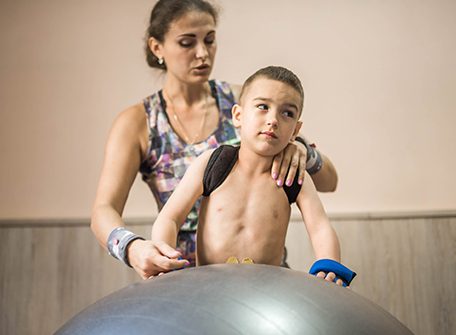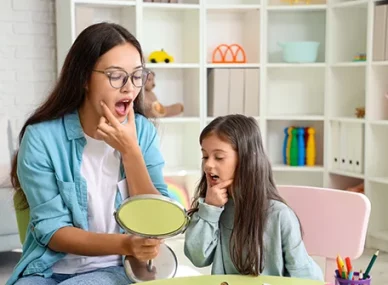Intensive therapy is now listed in the therapy programs of many reputed pediatric rehabilitation centers. The popularity of this therapy as a treatment option has gained popularity because of the positive practical outcomes. Children who participate in intensive therapy have experienced significant improvements in strength, independence, balance, functional mobility as well as gross motor skills.
Intensive Therapy in a Nutshell
Intensive therapy is a form of treatment where the therapy sessions are more frequent and condensed into a shorter time period. This therapy approach involves offering physical, speech, and occupational therapy to children for one hour each day. It occurs five days a week, over three weeks, which can result in hundreds or thousands of repetitions of exercises, developmental movements, and functional skills.
Our therapists carefully assess the conditions of each child to offer tailored intensive therapy in Dubai. Before that, we want parents to understand what intensive therapy is.
When Do Kids Need Intensive Therapy?
Intensive therapy is safe, beneficial, and suitable for children with various conditions such as ASD, cerebral palsy, prematurity, developmental delay, stroke, spina bifida, syndromes, chromosomal abnormalities, acquired brain injuries, and undiagnosed conditions. The intensive program can be initiated when the child is as young as one year old and continued into young adulthood.
Any Child can begin an intensive program younger than one year of age and into young adulthood.
However, just completing the 3-week intensive therapy is not enough for your kid. Children should practice specific home exercises after the intensive program to improve even better.
What Home Exercises Should Be Included After Intensive Therapy?
To maximize the benefits of your child’s intensive therapy program, it is essential to practice the exercises yourself. Watching the therapist perform the exercises is not enough as the way they hold and manipulate your child may not accurately reflect how it feels when you do it. During CME( (Cuevas MEDEK Exercise), for instance, the therapist holds your wrist with the same amount of pressure they use on your child to make you understand how to replicate the same technique at home.
It is also helpful to take detailed notes, videos, and photos during therapy sessions. Consider keeping a spreadsheet with all the exercises your child performs, including the specific areas to hold and instructions from the therapist on how to advance the exercises as your child gets stronger. This will help you keep the program relevant in between intensives. For CME or any other specific exercise, take pictures that show the full setup so that you can easily rebuild the equipment or necessary setting at home.
As a parent, you should come up with necessary questions that come to your mind related to the therapy. If there is something you do not understand, don’t hesitate to ask. This information can be beneficial when explaining the program to a therapist back home. You may also want to ask about variations of equipment that can be used to achieve a similar effect.
If you have not been practicing exercises with your child at home, it may take some time to adjust to the routine. It may feel challenging at first, but don’t give up. You and your child will eventually build up to longer sessions. Finally, it is essential to remember that doing exercises with your child can be enjoyable and bonding for both of you.
Bottom Line
Every child is special and so are their needs. Intensive therapy for infants or growing adults can only become fruitful if parents continue the exercises with their children at home. These constant and repeated exercises will boost the gross motor abilities to help the kid lead a more self-dependent life.
If you want to learn more about intensive physiotherapy for autism or other conditions, our team of therapists is right here to help! We always include parents in our therapy program so that they could help the child practice the exercises even at home to get maximum outcomes.
Book a consultation now!






